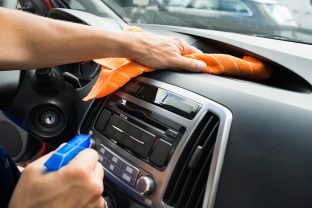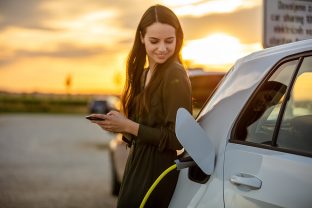Parking your car in the sun: beware of the risks

Why do cars heat up so quickly in the sun?
Cars are mainly made of steel and aluminium, which are materials that absorb and convert a lot of the sun’s energy into heat. The longer the car is exposed to the sun, the higher the temperature, often reaching up to 80°C.
The glass in modern windscreens filters some radiation: 5% gets reflected, 25% is absorbed by the glass, and the remaining 70% enters the passenger compartment.
Useful tips: Myths
The colour of your car makes very little difference. While darker cars heat up faster within the first 20 minutes, the temperature in light-coloured cars becomes more or less the same after prolonged exposure.
Leaving windows ajar also has no significant impact. Tests show a difference of only 2°C after 30 minutes. Therefore, there is a real danger if you leave a child or pet inside a parked car under the sun, even with the windows ajar.
What are the effects of heat on the exterior of a car?
Cars are made of resistant materials. Therefore, the effects of the sun are only felt in the long term:
- Paint: UV rays can affect the discolouration and flaking of the paint, often in connection with other factors (poor maintenance, bird droppings, tree resin), but only after several years.
- Rubber: long exposure to UV light can dry out rubber, causing it to shrink, lose protective properties and sometimes become brittle. This is particularly true for door seals, wiper blades and tyres.
- Engine: As well as flexible parts, such as belts and hoses, heat can also affect various fluids, resulting in premature engine wear or reduced performance.
What are the effects of heat on the interior of a car?
In the confined space of the passenger compartment, the temperature rises by 1 degree per minute until stabilising at around 70°C in the air and about 80°C on the dashboard, steering wheel and seats: the risk of getting burned is real.
In terms of aesthetics, prolonged exposure will result in the whitening of plastics.
Useful tip: Concerning electric vehicles, heat has a double negative effect on the batteries. At temperatures above 40°C, models with air-cooled batteries can lose up to 20% of their range. Heat also induces air conditioning use, which further reduces the range.
Is there a risk of cars catching fire in the sun?
With their secure fuel tanks, modern combustion vehicles do not present any risk. The danger of fire comes from objects left inside the car. For example, the sun’s rays will reflect off a carpet or seat when passing through a liquid (water bottle, etc.), which can cause some materials to melt.
How to protect your car from the sun?
There are several ways to protect your car:
- Park your car in a garage or covered car park; failing that, monitor the sun’s path to anticipate a shady spot.
- Use a sunshade: it will reduce the temperature by 10°C in the passenger compartment (40°C on the dashboard).
- Put child car seats in the boot.
- Place a cloth over the belt buckles.
- Install an athermic windscreen, which reflects part of the radiation (note that the effectiveness of tinted windows or solar films varies and is often inconclusive).
Wear and tear on rubber parts, altered engine performance, burns: the risks associated with the sun and your vehicle are not insignificant. You can reduce them considerably with a few precautions, such as using a sunshade and parking in the shade.














